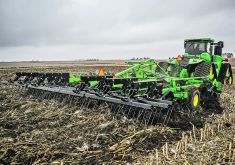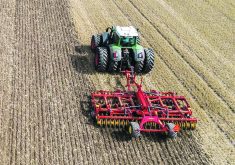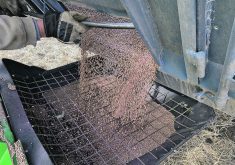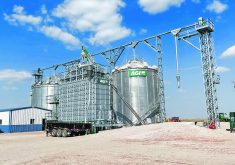It was Oct. 18, 1913, opening day for the new one-million-bushel Transcona Grain Elevator in Winnipeg. Designed with the latest technology, the facility consisted of a 16-story workhouse and 65 reinforced concrete silos 10 stories high.
Within hours of initial loading, the massive structure started to lean. Over the next 12 hours, it continued to sink into the ground until it listed 28.53 degrees.
What went wrong?
Related stories:
- Build the house on stone or sand?
- Floating bins for the win
Read Also

Final crop reports show strong yields, quality
Crops yielded above average across the Prairies this year, and quality is generally average to above-average.
A detailed geotechnical investigation was done before construction began, using the available expertise and experience in geotechnical engineering at the time. Excavations began in 1911. During the excavation it was determined that the first 1.5 metres of soil consisted of soft clay. Below that was a relatively stiff clay commonly known as “blue gumbo.”
At a depth of 3.7 metres, an “in situ” plate compression test was done. The interpretation of the results at the time indicated the foundation soil could accept a uniform load of 400 kPa. The maximum soil stress at maximum load was estimated not to exceed 300 kPa, so the test was satisfying.
In addition to the tests, it was assumed the “blue gumbo” at the site had similar characteristics and depth as the sites of other complex buildings in the surrounding area.
Unfortunately, the problem lay deeper. No deep exploratory boreholes were drilled and it turned out there was important information lurking in the deeper layers.
The circular plate of the soil load-bearing device is small in diameter and cannot give satisfying results at greater depths below the level of the foundation slab.
Engineers in charge assumed the soil was homogeneous, with the parameters of the upper layers of stiff clay having a significantly higher bearing capacity than the lower layers.
Guided by this assumption, the designers calculated an allowable load of 321 kPa, which was considered plenty because it was more than the actual load on the structure.
However, the load from the structure under the foundation also affected the underlying softer layer of clay that had a much lower load-bearing capacity. Modern investigations showed that when the lower layer with the lower parameters was considered, the permissible load was only 251 kPa, lower than the actual load of 291 kPa.
The greater load caused the layers of clay to slip over each other, something called base shear failure. The clay layers moved aside like a crumpled blanket, with the elevator finally stopping as it reached bedrock more than seven metres below.
In short, the collapse of the soil would not have occurred had deeper investigations been carried out and had the parameters of the lower layer of clay been known during the design phase.
Ultimately, the Transcona elevators’ bins were emptied and some ingenious engineering righted the massive structure, stabilized it, and it eventually entered service as intended.
Today, engineers have much more sophisticated analytical tools to do advanced stress analysis than existed a century ago. But the Transcona elevator event lives on as a lesson to geotechnical engineers about the importance of determining the positions and the depth of investigation and to test correctly, especially with exploration boreholes.
















